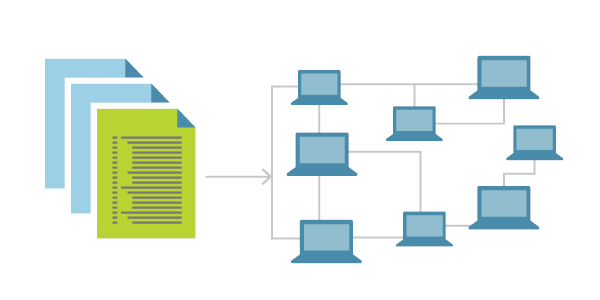Tag: Tools
In our Tools section, we take a look at all the various tools our admins use in their daily lives to maintain the integrity of our servers.
What is Containerization?

Containers are the future of application development and hosting. They enable DevOps, developers, and system administrators to build, test, deploy, and maintain applications quickly, securely, and efficiently. Tools built around the containerization concept provide simple solutions for basic web applications. These advanced granular configuration options provide the control many enterprise applications may need.
What is Infrastructure as Code? (IaC)
Introduction: What is IaC?

Today we will become acquainted with a concept known as Infrastructure as Code. The idea of Infrastructure as Code is becoming more and more popular today. IaC is a method used to manage and provision a data center via defined machine-readable files instead of physical hardware configuration or other interactive configuration tools. This article will share what it is used for, why it is important, and why businesses strive to utilize this platform to achieve a desired set of results. It is essential to understand that we will consider both the theoretical and practical parts of IaC.
How to Implement Zero Trust Security in 5 Steps
Zero Trust security is the concept, methodology, and threat model that assumes no user, system, or service operating within a secured internal environment should be automatically trusted. It put forward that every interaction must be verified when trying to connect to a system before being granted access. This concept uses micro-segmentation, and granular edge controls based on user rights, application access levels, service usage, and relation to the location to determine whether to trust a user, machine, or application seeking to access a specific part of an organization.
DevOps: A New Perspective on Shared Automation
What is DevOps?
DevOps is a set of various tools, practices, and ideals that combine software development (Dev) and IT Operations (Ops) into a single unifying force. It allows for better collaboration between developers, operations teams, system administrators, and system engineers. Their streamlined goal is to continually provide a high-value software product to the customer at high speed while monitoring and improving the overall process than using traditional software and infrastructure management.
How to Install and Configure Chef on Ubuntu 18.04
Introduction
In this article, we will be reviewing the Chef software, how it works, and why it is useful. We will also explore how it is helpful in DevOps. And then, we will install Chef on Ubuntu 18.04.
How to Edit Your DNS Hosts File
One of the most powerful tools available to anyone working on their site during a migration is their computer's "hosts" file. The hosts file is used to map domain names to IP addresses, and can be used as an alternative to DNS. It also allows you to specify the IP address to which a website resolves on your computer, regardless of what may be published in the site's DNS zone file.
What is Configuration Management?

Configuration management is the process by which a company or organization defines and tracks the state of its infrastructural resources. Encapsulated in those resources are both physical hardware and software. It is a means to ensure that when changes are made to a system, those changes are tracked, geared toward the ultimate predefined criteria of what state should be.
What is the Difference Between Git and GitHub?
What is Git?

Git is a distributed version control system (or VCS), typically used to track files changes. It was developed in 2005 by Linus Torvalds, the creator of the Linux kernel. Git’s primary use is to keep track of changes within source code during the software development process. Source Code Management or SCM was the primary reason for its creation.
How to Clear Browser Cache and Cookies
What is the Browser Cache?
The browser cache is used for storing website data like HTML, CSS, JavaScript, and images. Caching is a method of storing data that can be used later. Like other programs that you may have installed, browsers use caching to store website data on your computer instead of requesting the data from a web server to make web pages load faster.
The Surprising History of Software Containerization

The arrival of containerized software has drastically changed the landscape of web hosting, and web application provides. The simplification and speed that comes with containers make deploying services like websites so efficient that the traditional model of dedicated servers running specific web-based software is almost obsolete. This being said, there will always be a place for virtual server projects and dedicated servers handling specific tasks like HIPAA compliant hosting services.
Our Sales and Support teams are available 24 hours by phone or e-mail to assist.

